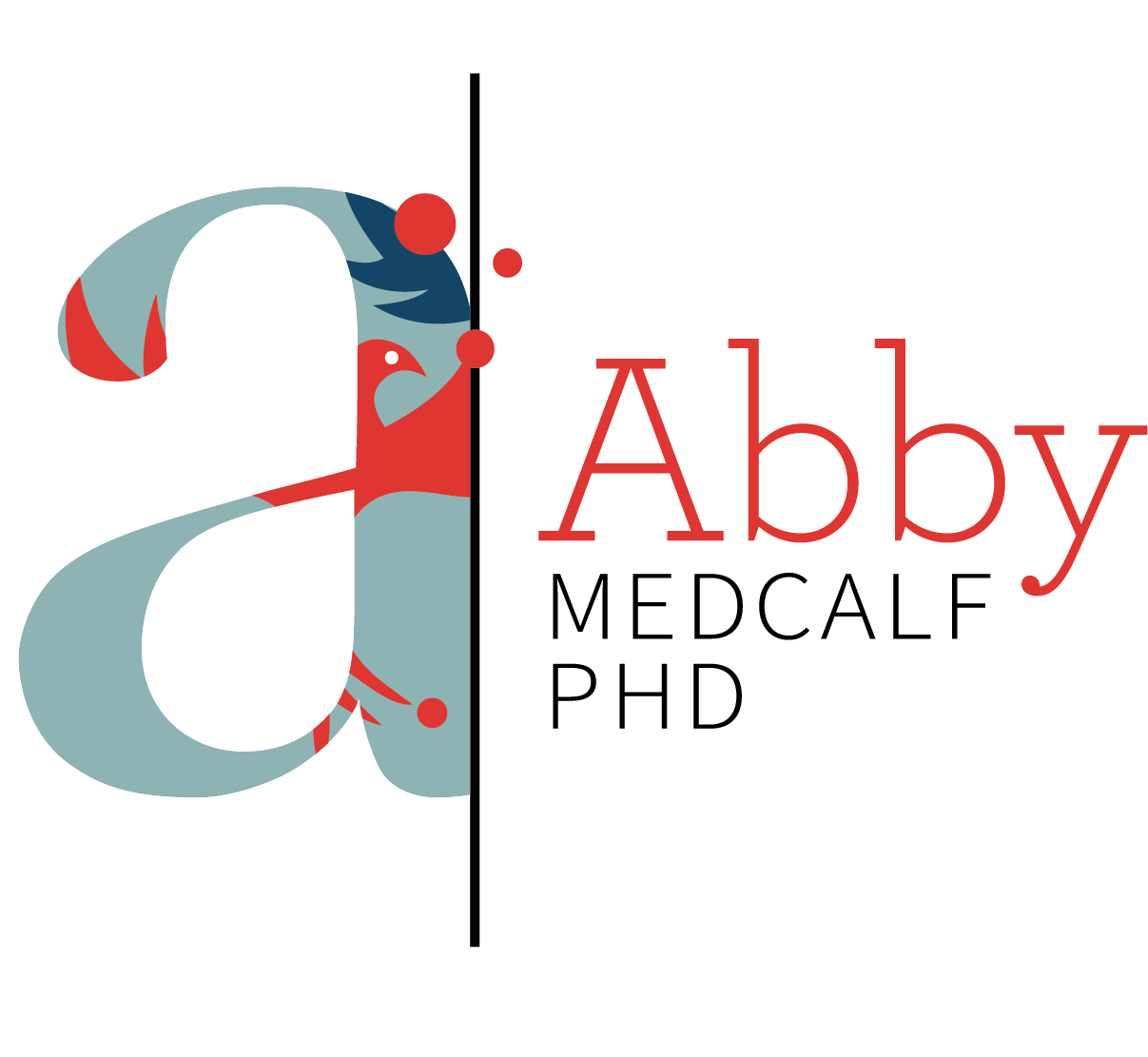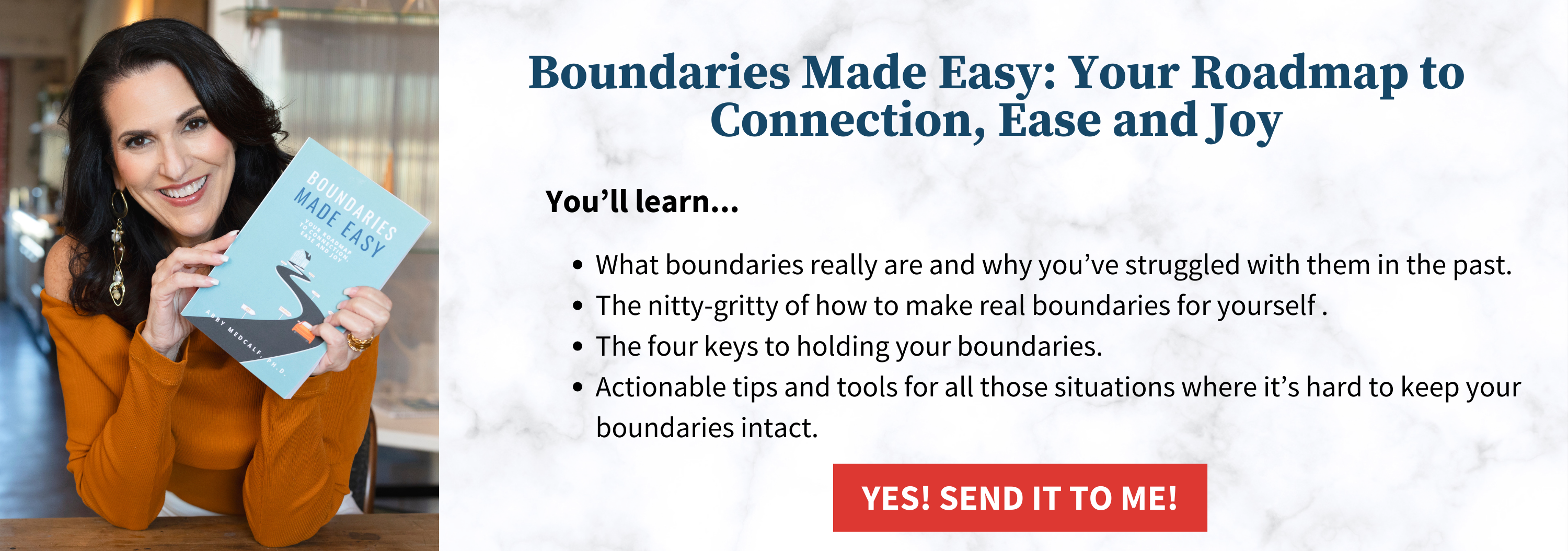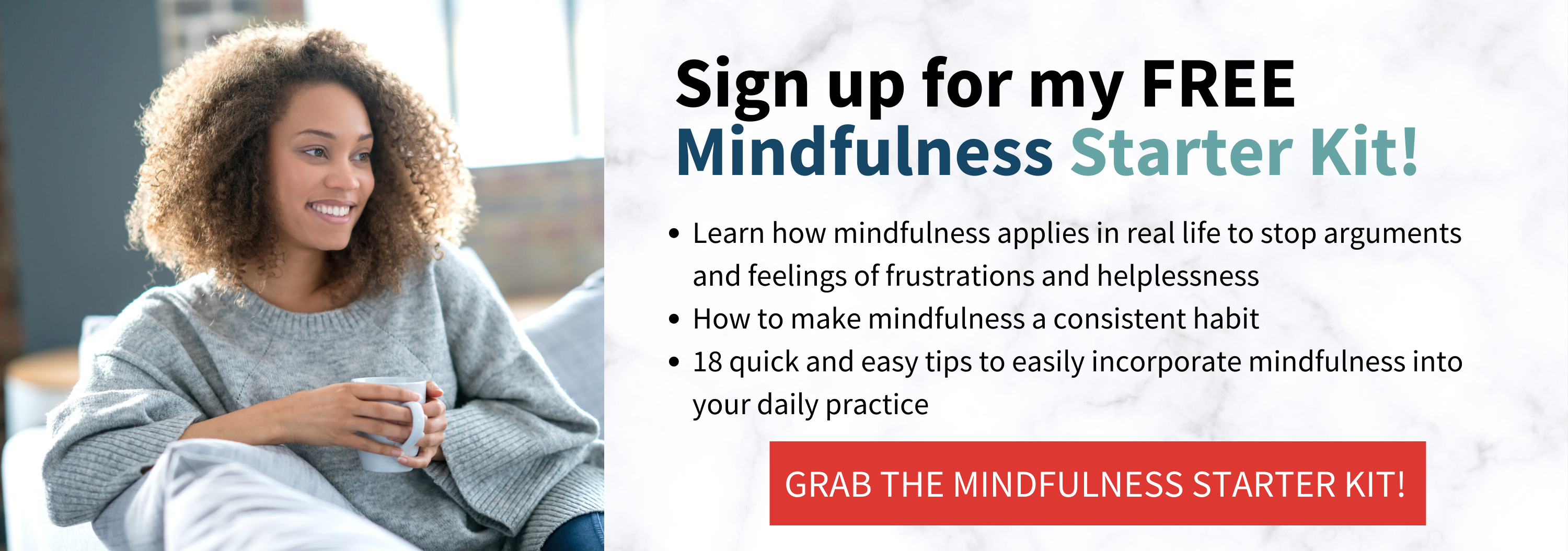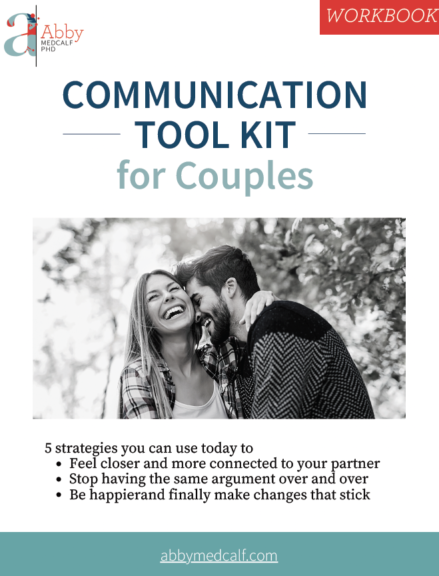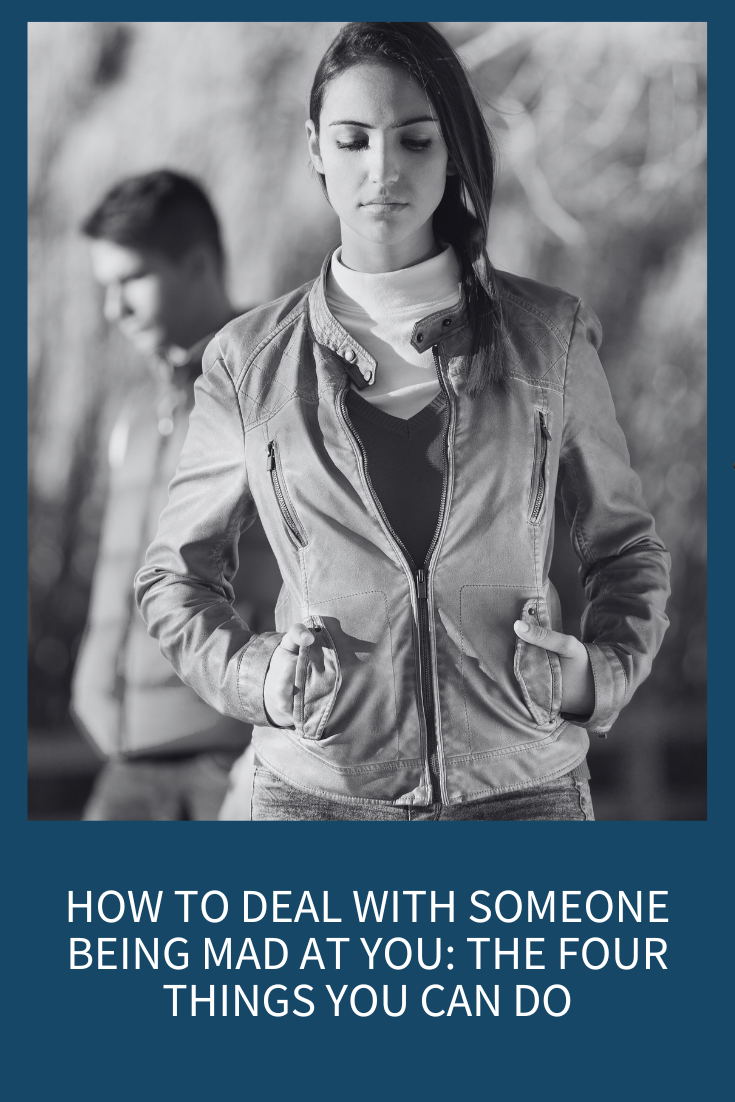
One of the toughest parts of being human is dealing with others being angry or disappointed in us. You might react by being angry back, people pleasing or avoiding that person altogether. But no matter what you do, your brain likely keeps coming back to this person who’s angry at you, and you end up feeling anxious, fearful, resentful or drained. Why can’t you just let it go, and what can you do to make it better? Today I’ll teach you the four things you can do to ease your anger and anxiety when someone is mad at you and find some internal peace.
10-minute read
Introduction
When someone is upset with us, it’s hard not to get dragged into their emotions. You might get mad when your mom is mad at you, feel depressed when your partner is unhappy with you or feel like poop because your boss criticized your work. The problem is tying our own happiness to whatever someone else is feeling. Because different people can have different moods throughout the day, you might end up feeling like you’re on a roller coaster of emotions if you allow their negative (or positive) feelings to dictate how you feel.
But Why, Abby?
Most people will tell you it’s “natural” to get upset when someone else is upset with you. But why is that? I mean, whether you think the other person’s anger is justified or not, you’ll still get upset! Doesn’t seem right.
When someone else is upset with us, it signals a part of our brain called our Limbic System. This is the ancient biological system everyone has that looks for threats in the environment to help keep us safe. The problem is that this Limbic System can be a real drama queen and make you think a hangnail is cancer. It overdramatizes the negative and gets your brain circuitry wired into fight/flight/freeze or fawn mode as stress-inducing hormones start flooding your body.
If you had a relatively healthy childhood, these negative feelings will be short-lived and, if you’ve done therapy or other helpful modalities such as meditation, mindfulness, biofeedback or EMDR, you’ll find that you can stop your system from getting triggered in any long-standing way. However, if there was dysfunction or trauma in your childhood, you’ll likely get triggered in such a way that it feels impossible not to ruminate or overly focus on someone else’s anger with you.
A trigger is when some person, situation or even a smell drives an unconscious thought, feeling or behavior. In other words, you have some reaction that you don’t feel you have control over, and/or you don’t even realize you’re having! Often, the reaction doesn’t match up or isn’t commensurate with whatever’s going on.
When you get triggered, your autonomic or involuntary nervous system becomes dysregulated, and you either get into a state of hyperarousal, which is connected to the fight/flight response or a state of hypoarousal, which is connected to the freeze response. There’s also something called the fawn/fold response, which is also most often connected to hypoarousal. (However, in my own practice, I think this response can be split. In other words, I think some people react with hyperarousal and others with hypoarousal when they fawn).
In hyperarousal, you feel hypervigilant, agitated, anxious, panic, an inability to relax, emotional flooding, or sleeplessness. In hypoarousal, you’ll experience symptoms like depression, brain fog, lethargy, disconnection, dissociation, hopelessness and being passive or overly compliant.
It’s very important that you identify what normally happens to you when you’re triggered because the tools to use when you’re in hyperarousal are different than what you’d use if you often go into hypoarousal.
I go deep into hyperarousal and hypoarousal states and how they affect your boundaries in my latest book Boundaries Made Easy.
The Four Things You Can Do to Feel Better
Option #1: Acknowledge How They Feel
It doesn’t matter who’s right or wrong. If someone is upset with you, start the conversation by acknowledging how your words or actions might have impacted the other person. Do not, I repeat, do not say anything about your intentions! Your intentions don’t matter, and they’re not going to move the conversation forward. You know you hate it when someone hurts your feelings and they say, “Well, that’s not what I meant!” Guess what? It’s the same when you do it with others.
Let me be clear that acknowledging how the other person feels isn’t:
- Agreeing that they should feel that way
- Apologizing
- Saying you were wrong
- Agreeing that you “made them feel that way”
Here’s something that happened recently with one of my clients. My client, we’ll call her Rashida, was about eight months post-partum but hadn’t really lost any of the weight she’d gained during her pregnancy. Her mother kept commenting on her weight and being very critical every time they spoke or saw one another.
Rashida drew a boundary and told her mother in the most loving and thoughtful way, “Mom. I love you. When you keep bringing up my weight, I end up feeling bad about myself and angry at you, which I don’t want because I want to feel close to you. I need you to stop mentioning anything to do with my weight. If you do, I’ll be leaving those conversations immediately.”
Her mother became very angry at Rashida for this boundary (after all, she’s only saying something because she cares and is trying to help). She became especially enraged when Rashida actually followed through and left her mother’s house one day when she again brought up her weight.
Rashida had never stood up to her mother before and was having a difficult time standing her ground. She kept trying to re-engage her mother and, although it took a few tries, it worked.
She would start by acknowledging. “I know my drawing a boundary around how you speak to me is very difficult for you. I can only remind you that I love you and want to feel close to you. When you comment on my weight, I feel angry at you and don’t want to interact.” Rashida said this in a number of different ways and, ultimately, her mother came around and stopped mentioning her weight to her.
Remember, you’re not trying to get the other person to agree with you when you acknowledge their feelings. Instead, you’re trying to create some understanding.
Even though you acknowledge in this healthy way, they still might remain mad at you. In my experience, what changes, is that you feel better because you’re being open, transparent, courageous and honest. This makes you feel better about yourself and allows you to truly see that this is about the other person, not you. This, in turn, helps you not be so engaged with their anger at you.
Option #2: Do Nothing
In some cases, I would advise doing nothing when it comes to the other person. Don’t approach them or try to make things better. Instead, focus on yourself and dealing with your triggered response through mindfulness in that moment.
When your brain goes to the issue, gently and non-judgmentally, bring it back to the present where all is well.
Option #3: Work on (Loving) Detachment
I’ve talked about the importance of loving detachment in detail before, but I wanted to say a word here about detachment or non-attachment, which is a basic tenant of the Buddhist philosophy.
Non-attachment is the idea that we should let go of our attachment to things such as our thoughts, emotions, relationships, and material possessions (although please don’t try to grab my Louis Vuitton bag). Non-attachment doesn’t mean you should avoid buying a great pair of shoes (thank God) or not get into a relationship. Instead, it speaks to not becoming attached to them in a way that causes suffering when they inevitably change or disappear.
Generally, you practice non-attachment through mindfulness practices. With material possessions, you would let go of the belief that they bring you happiness. Instead, you’d focus on appreciation for peace in the present moment.
In relationships, you’d recognize that all relationships are impermanent and allow them to grow, change and evolve naturally without becoming too fixed to a particular outcome (yes, that means letting go of control).
With your thoughts and emotions, you learn to observe your thoughts from a third-party perspective (what we call meta-cognition) without being attached to a thought or feeling or believing it defines you. A simple example of this is saying, “I’m noticing that I’m having a feeling of anxiety,” instead of, “I’m anxious.”
When you practice non-attachment over time, you find that you cultivate a sense of inner peace and contentment because your thoughts and feelings aren’t attached to anything external. Internal peace and joy, and freedom from suffering, are the ultimate benefits of practicing non-attachment.
In relationships, we speak about loving detachment, so you remember that empathy, compassion and kindness are part of detaching from the feelings of others.
Option #4: Me/Them/We Lens
I learned about the Me/Them/We Lens many years ago from a Buddhist teacher.
It goes like this. In general, we see the world through a Me Lens. When things happen, we think about how we feel, how we’re affected, and we have our own story we tell about it from our point of view. And we are the center of this story.
But the Me Lens isn’t objective. It’s extremely biased and filled with our own faulty beliefs and ideas about the world. We think something is true or a fact but that doesn’t mean it is. When people say things to us that we don’t like, we then react. We believe they’re being mean, critical, and judgmental. Since we feel the way we think, we then feel angry, hurt, resentful or even depressed. We get the idea that it’s someone else’s fault that we’re feeling a certain way. “My mom drives me crazy!” “My sister makes me so angry!”
When we come from a Them Lens, we try to think from the other person’s point of view. We attempt to have empathy. “My mom was raised with a lot of trauma and she’s doing the best with the resources she has.” “My sister just went through a divorce, and I know she’s scared and taking out her fear on me.”
A great way to get from a Me Lens to a They Lens is to say, “The story I’m telling myself about this situation is…
It’s helpful and kind to think this way, and you might stop there. Seeing through a Them Lens, might be enough to have you caring less about the fact that someone else is mad at you. It might allow you to let go and move forward.
But if that’s not enough to get you out of obsessing that someone is mad at you, a We Lens takes all this one step further. You would still go through the They Lens but then you’d bring it back to We. So, you might say/think, “Yes, my sister just went through a divorce, and I know she’s scared and taking out her fear on me. But it’s not OK. It’s not good for her to be so full of fear and reacting from that place all the time. And it doesn’t feel good to me. I’m going to let her know I’m having a hard time with how she’s acting and tell her that I’d like us to work on finding a healthier, more connected way to communicate/share feelings moving forward.”
The We Lens moves you and the other person into being a team that collaborates and looks to get everyone’s needs met.
Resources for How to Deal with Someone Being Mad at You
Boundaries Made Easy: Your Roadmap to Connection, Ease and Joy by Dr. Abby Medcalf
How to Effectively Deal with Triggers in Your Relationships
Your People-Pleasing Might Be a Trauma Response
How to Make Mindfulness a Consistent Habit
Three Steps to Loving Detachment
